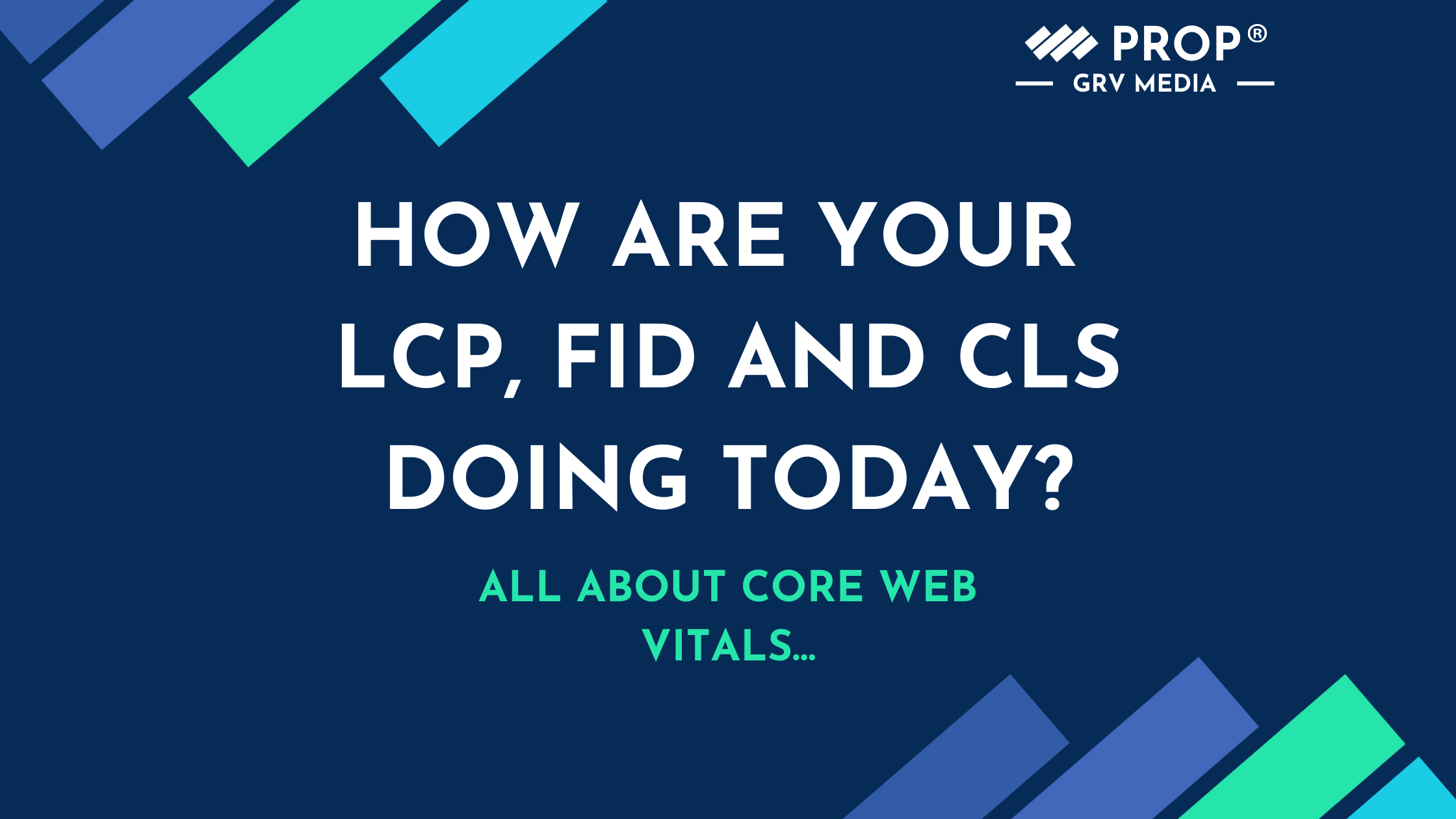Core Web Vitals are a set of metrics that measure key aspects of user experience on a website. In this blog post we’ll look at what these metrics are, why they are important, and how publishers can improve their performance.
Prioritising User Experience
First announced in May 2020 and rolled out between June and September 2021, Core Web Vitals (CWV) is an evolution of Google’s continued efforts to improve user experience (UX).
Prior to this, much attention had been focussed getting mobile performance and UX up to scratch. The introduction of CWV and the transparent framework around it gives all publishers the opportunity to fine tune their UX in line with Google’s standards, and improve search ranking performance.
Put simply, the better your CWV score, the more likely you are to rank against a website with similar content with a lower score.
The principles behind Core Web Vitals are simple, even if the acronyms associated are not! At the heart of the initiative is the intention to make every web page visit as smooth, speedy and efficient as possible. And if publishers are able to achieve these aims, they are likely to benefit from greater engagement as well as search visibility.

The Three Main Elements of Core Web Vitals
Largest Contentful Paint (LCP): This measures the loading performance of a website. Specifically, it measures the time it takes for the largest piece of content on a page to load, such as an image or video. We all know that slow loading can be frustrating, and often leads users to give up on the page before the content appears.
First Input Delay (FID): This measures the interactivity of a website. FID measures the time it takes for a user to be able to interact with a page after clicking on a link or button. The quicker the link or button are to react and show what is promised, the better the score will be.
Cumulative Layout Shift (CLS): This measures the visual stability of a website. This vital metric measures the amount of unexpected layout shift (sometimes known as ‘jank’) that occurs on a page as it loads, such as when a button or link moves unexpectedly.
You can find out more about what Google mean in their Core Web Vital’s reports here.
More than just a ‘Ranking Factor’
It’s clear that Core Web Vitals are important for publishers because they are a key factor in determining a website’s overall user experience.
Google has indicated that CWV are a ranking factor in its search algorithm, meaning that websites that provide a better user experience as measured by these metrics may rank higher in search results. More than just a ‘ranking factor’, it may also act as a tie-breaker between sites with similar content.
In addition, a good user experience can lead to increased user engagement, longer time on site, and potentially higher conversion rates. Therefore, it is important for publishers to optimise their websites for Core Web Vitals in order to improve their search rankings and provide a better user experience for their visitors.

Some Words of Wisdom…
While most independent publishers are well aware of the importance of CWV, understanding fully how the various tests and reports which are available work – isn’t always easy.
Graham Morris, CEO of GRV Media, has worked with PROP’s publisher clients since the rollout on how best to balance the requirements of revenue generation and CWV, which can vary according to site and publisher priority.
“Even small changes on site like adding a new vendor can have an impact on CWV, including tipping a site from a pass to a fail”
Graham Morris, CEO of GRV Media
What can PROP® do to improve my Core Web Vitals?
As well as offering expert advice from the team, the PROP setup has a number of options including delay loading advertising and ad units such as the PROP® Viewable Slider, which help bolster CWV results.
And with the constant updates, improvements, and changes to the criteria set by Google, you can be sure that keeping a very close on Search Console for CWV changes the coming months and years will be time well spent for publishers of all types.
